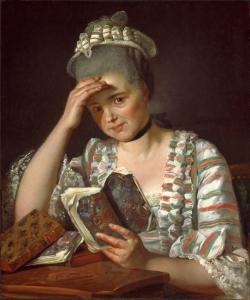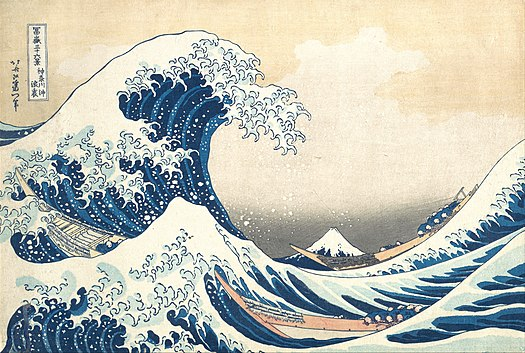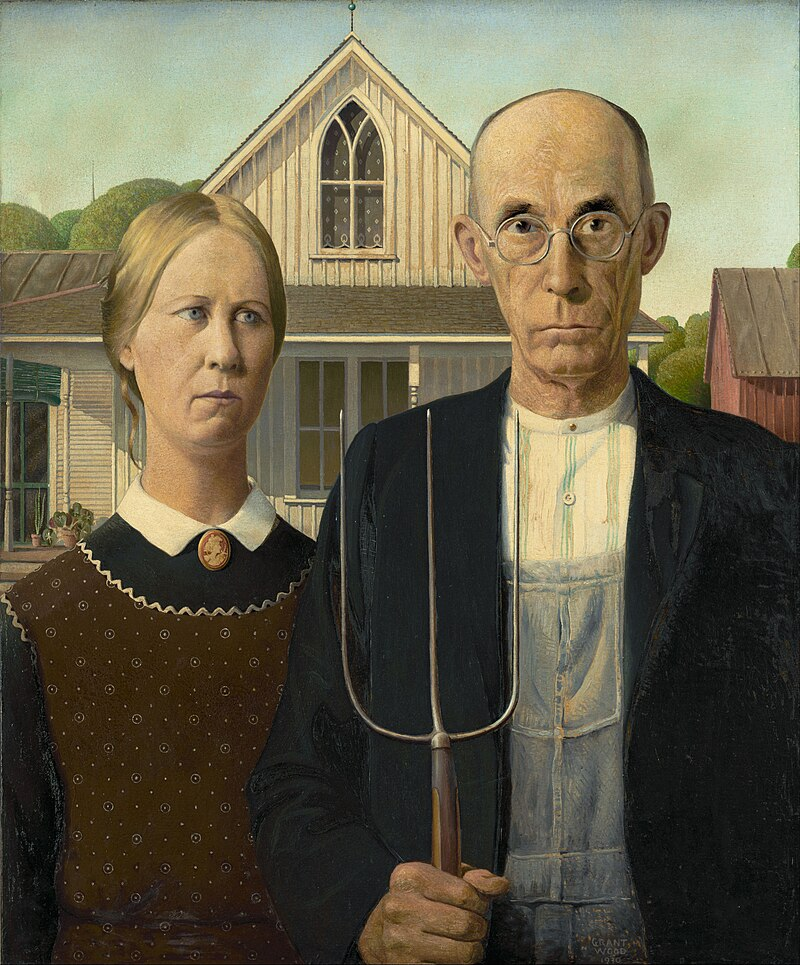Classical Blog - Art and Science Discovery
Madame Francois Buron - 1769 France
Jacques-Louis David is a French painter born in 1748. After his father passed away, David started studying painting. With the help of his mother and uncles he was afforded a solid education. David went on to work n the studio of Joseph-Marie Vien (J;acques-Louis David). David's paintings were directed towards the idea of political ideology, he wanted to focus on civic virtue. There is not enough history on David's opinions but he was incredibly fond of the revolution and was a major supporter.
The Madame Francois Buron panting is one of Jacques-Louis earlier paintings. It is a oil painting on Canvas and is available to view in the Art Institute Chicago in Gallery 216. I was drawn to this painting because during this era, it was not common for there to be women that were well read or scholarly (Megotti Art and scientific discovery in the 1700's: Classical era). During the classical era, writing and literature started to become far more popular with writers sharing more of their work. I felt the emotion that this women is portraying, she is intrigued and seems perplexed in what she is reading. You can tell that she has a lot of books on her desk and that this isn't her first book. Her dress seems well made and has bright colors that draw your attention to her. She looks as if she is from a higher class and was afforded the opportunities to read and become more educated than others. This painting is related to the theme Art and Science Discovery because during this time educated women that could read were not that common. This women seems to be reading something that is interesting to her and that she wants to learn more about.The Alchymist 1795 - Joseph Wright of Derby
Joseph Wright of Derby was born in 1734 in Derby England. He is a landscape and portrait painter that has been claimed to be the "first professional painter to express the spirit of the industrial revolution." (Joseph Wright of Derby). At seventeen years old Wright spent two years studying under Thomas Hudson and later worked as his assistant for fifteen months in 1753. During the British Enlightenment, Wright has close contact with important folk that had a huge hand in the the manufacturing of pottery and folk that were members of the Lunar Society (Joseph Wright of Derby).
The Alchemist Discovering Phosphorus was completed in 1771 and then corrected in 1795. The full and original title of the painting is "The Alchemist, in search of the Philosopher's Stone, Discovers Phosphorus, and prays for the successful conclusion of his operation, as was the custom of the ancient Chymicals Astrologers" (The Alchemist discovering phosphorus). I was drawn to this painting because it is believed that the story behind this painting is from the discovery of Phosphorus by Hamburg Alchemist Hennig Brand in 1669 (The Alchemist discovering phosphorus). This painting has so many incredible details that tell a story about what is going on in that time. Most of the painting is dark, there are two other people in the painting that are somewhat lit up due to a candle burning. The man in the center of the painting has the most light directed towards him, he seems as if he is in complete shock or amazed at what he just discovered. I am a science lover and would hang a painting like this in my own home. Wright as a few paintings like this that are capturing scientific discoveries and they are all amazing.
An Optician and His Attendant 1772 (John Cuff and his Assistant) - Johan Zoffany
Johan Zoffany was born in 1733 in Germany, he was a neoclassical painter that spent most of his life in England, Italy and India. In 1750 Johan traveled to Rome and started studying in a studio under Agostino Masucci. After spending a year in Rome, Johan travelled back to England and started working with a clockmaker, painting decorative designs on clocks that were sold to the public.John Cuff and his Assistant also know as An Optician and his Assistant, was created in 1772. It is a oil painting on canvas and is currently located in the Royal Collection Trust (John Cuff and his assistant, 1772)). This painting is really fascinating to me because Zoffany painted this of real people in real time. The older gentleman sitting down is John Cuff and the man standing is his assistant. Sir Joshua Reynolds was someone who bought many of Zoffany's paintings and encouraged him to paint different things that he found interesting. Reynolds had commissioned a fleet street optician that obtained microscopes and was creating glasses and lenses for people in the town (Johan Joseph Zoffany (Frankfurt 1733-London 1810) - John Cuff).
“Jacques-Louis David.” Artist Info, https://www.nga.gov/collection/artist-info.1212.html#biography.





Comments
Post a Comment